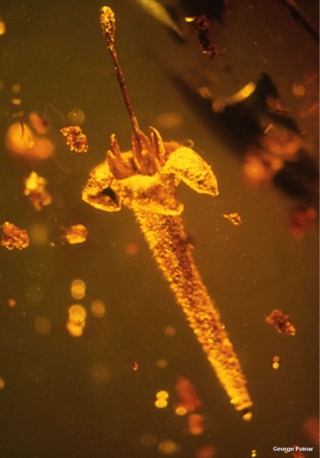
About 30 years ago, Professor George Poinar, from Oregon State University collected during a field about 500 fossils, . most of them insect
Poinar is a renowned entomologist, so the priority of these samples gave it to his little animals; until, after decades in the dark, put your attention on two fossilized flowers.
And to his surprise discovered that it was a new species of plant, now defunct, which flourished makes 15 million years .
Strychnos electri belongs to the genus of tropical shrubs and trees known to produce the deadly toxin strychnine.
the American researchers they called this species “elektron”, the Greek name for amber, fossilized resin of trees and dead.
One of the things that attracted the attention of scientists is that these flowers were surprisingly intact, unlike what happens with most fossil amber plant normally offered only fragments .
the discovery was made after 2015 Poinar send him to professor Lena Struwe of Rutgers university images in high resolution.
“These flowers look as if they had just fallen from the tree,” Poinar said.
“I thought they might try to Strychnos and the I sent Lena because she knew that was an expert in this genre. “
the Struwe professor compared the physical structure of the flowers with all 200 species of Strychnos known .
“Miré each specimen of the species of the new world, photographed and measured and compared it with the image that George sent me, “said Struwe.
For animals that existed in the Late Cretaceous, it is likely that the S. electri is not a good food.
“Almost all species of the genus Strychnos are somewhat toxic form,” said Poinar.
“ Each plant has its own alkaloid with different effects. Some are more toxic than others, and might these have fared well due to the poison that served as a defense against herbivores ” he added.
These flowers also fall into the family of “astéridas” which includes more than 80,000 flowering plants and many of them are used for human consumption, such as potatoes, mint, sunflower and coffee plant .
the new finding, published in the journal Nature plants , is considered a crucial addition to the study of this family of plants, which have very little information.
No comments:
Post a Comment